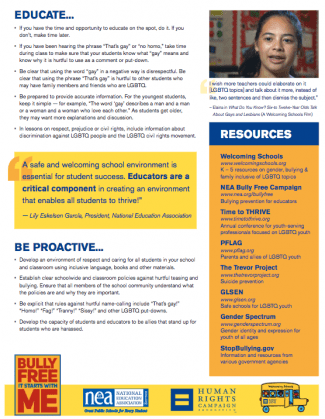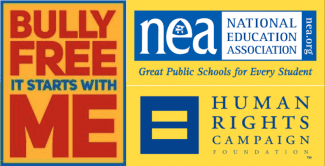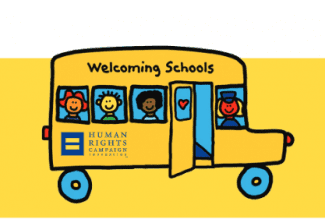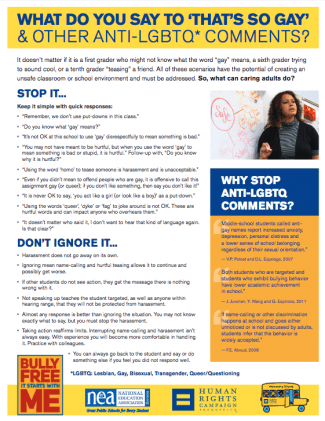We need to guide our students and teachers better in our school systems on how to deal with improper word usage and hurtful sayings. When I was a teacher for ten years, I don't remember any solid school wide training on how to deal with hate speech. I've been away from that for about a decade, but now in higher education, there's no training there either.
Someone knew we needed help. There's a new handout developed in partnership between the National Education Association (NEA) and the Human Rights Campaign Foundation and their projects: NEA BullyFree, Time to THRIVE and Welcoming Schools. How To Stop Anti Gay and LGBTQ Comments is a new pamphlet and downloadable PDF to help adults deal with the simplicity of anti-LGBTQ speech.
The pamphlet opens up with"
It doesn’t matter if it’s a first grader who might not know what the word “gay” means, a sixth grader trying to sound cool, or a tenth grader “teasing” a friend. All of these have the potential of creating an unsafe classroom or school environment and must be addressed. So, what can caring adults do?
What are the solutions to this kind of behavior? I usually replaced the word gay with homosexual. If a student said, "That's so gay," I would respond with, "Yes, that's so homosexual." The usual response would be, no, that's not what they meant. It would get them to think and I don't think I ever had an issue with someone in that class or grouping use the word again.
The four sections of the pamphlet are:
Stop It …
Keep it simple with quick responses:
Don’t Ignore It …
Harassment does not go away on its own.
Educate …
If you have the time and opportunity to educate on the spot, do it. If you don’t, make time later.
Be Proactive …
Develop an environment of respect and caring for all students in your school and classroom using inclusive language, books and other materials.
There are many more points to each of the four sections. Take a look at the entire pamphlet by viewing the PDF here. Or you can click on the images below for a larger view.

h/t: welcomingschools.org



